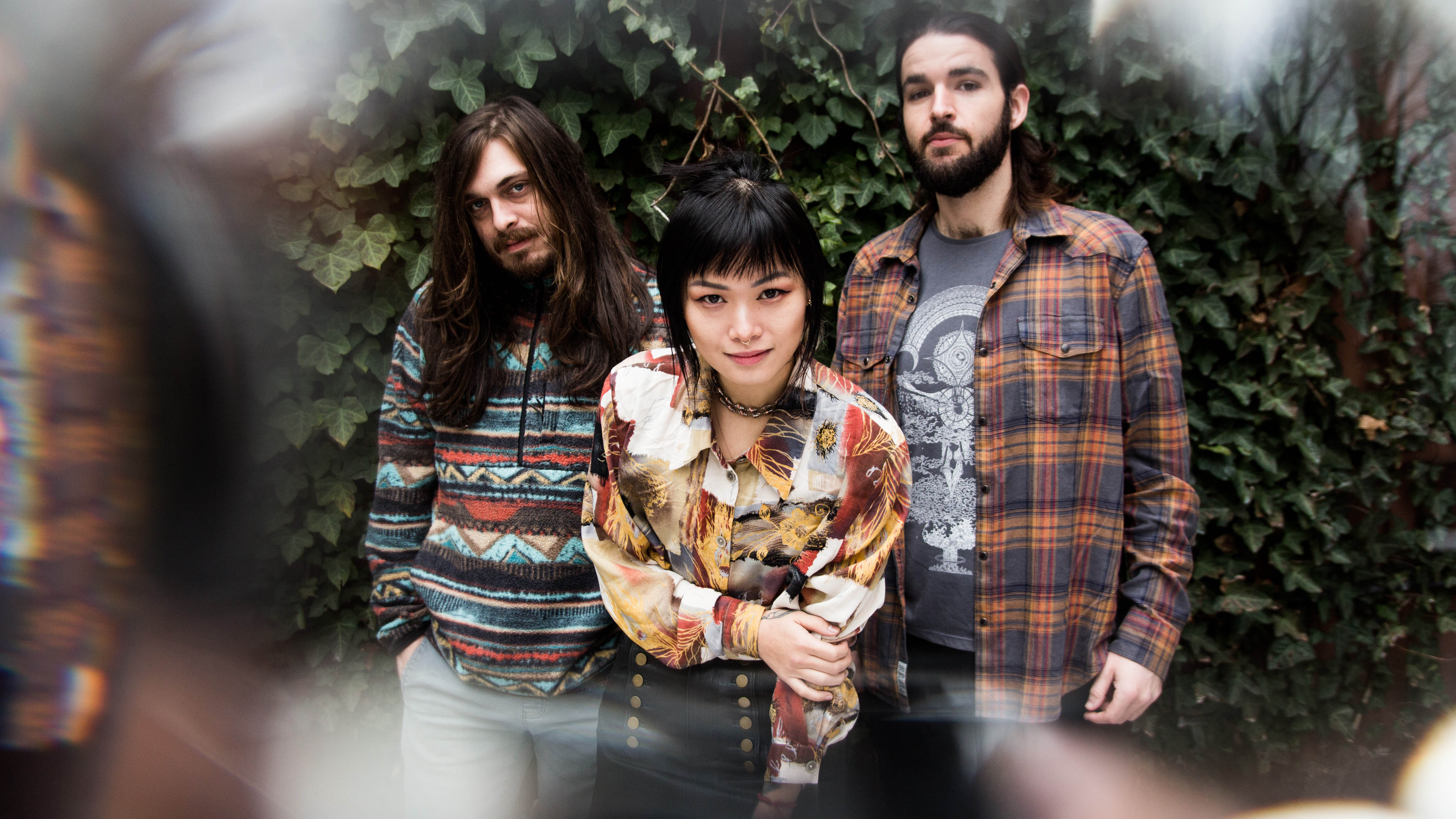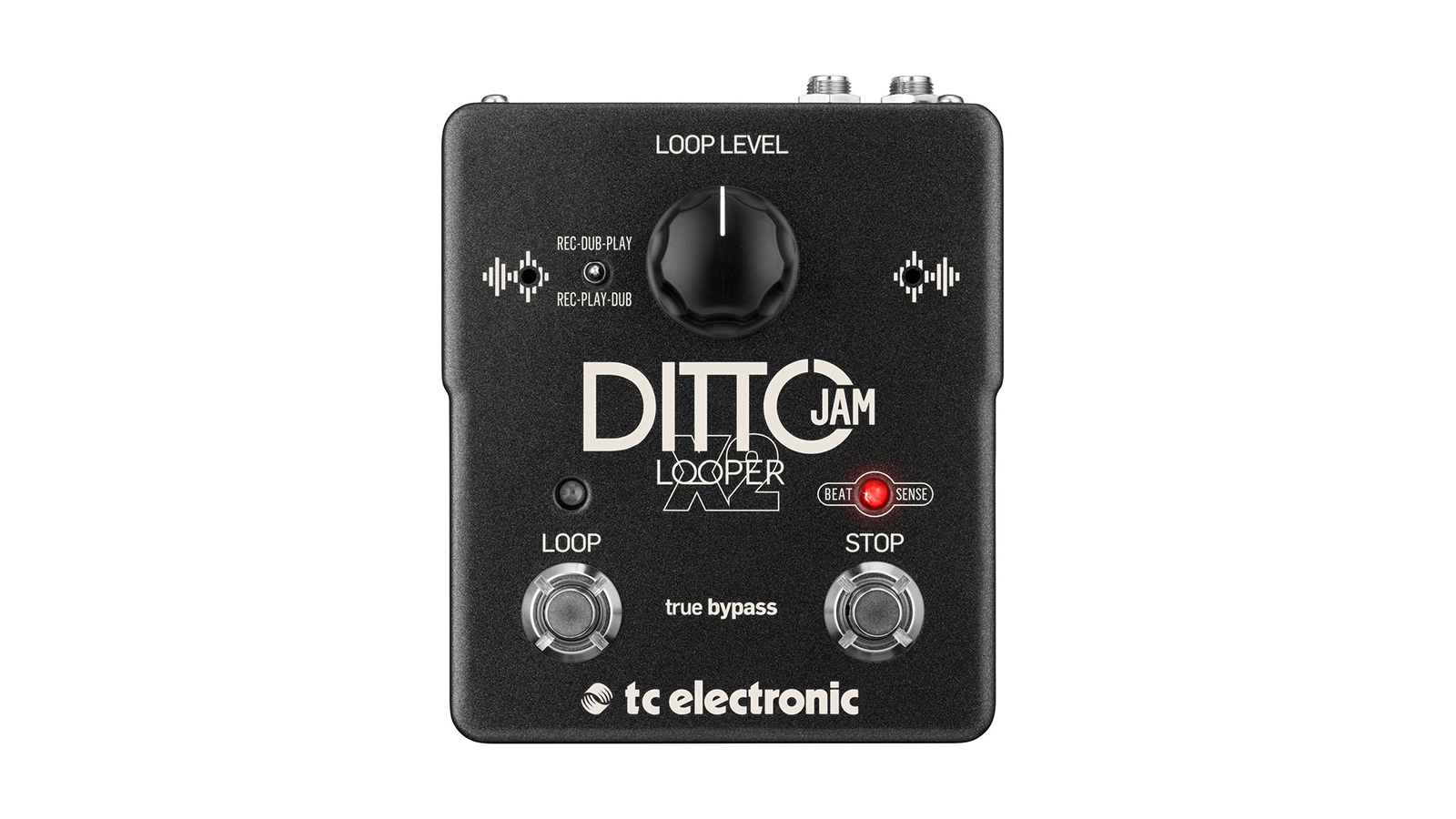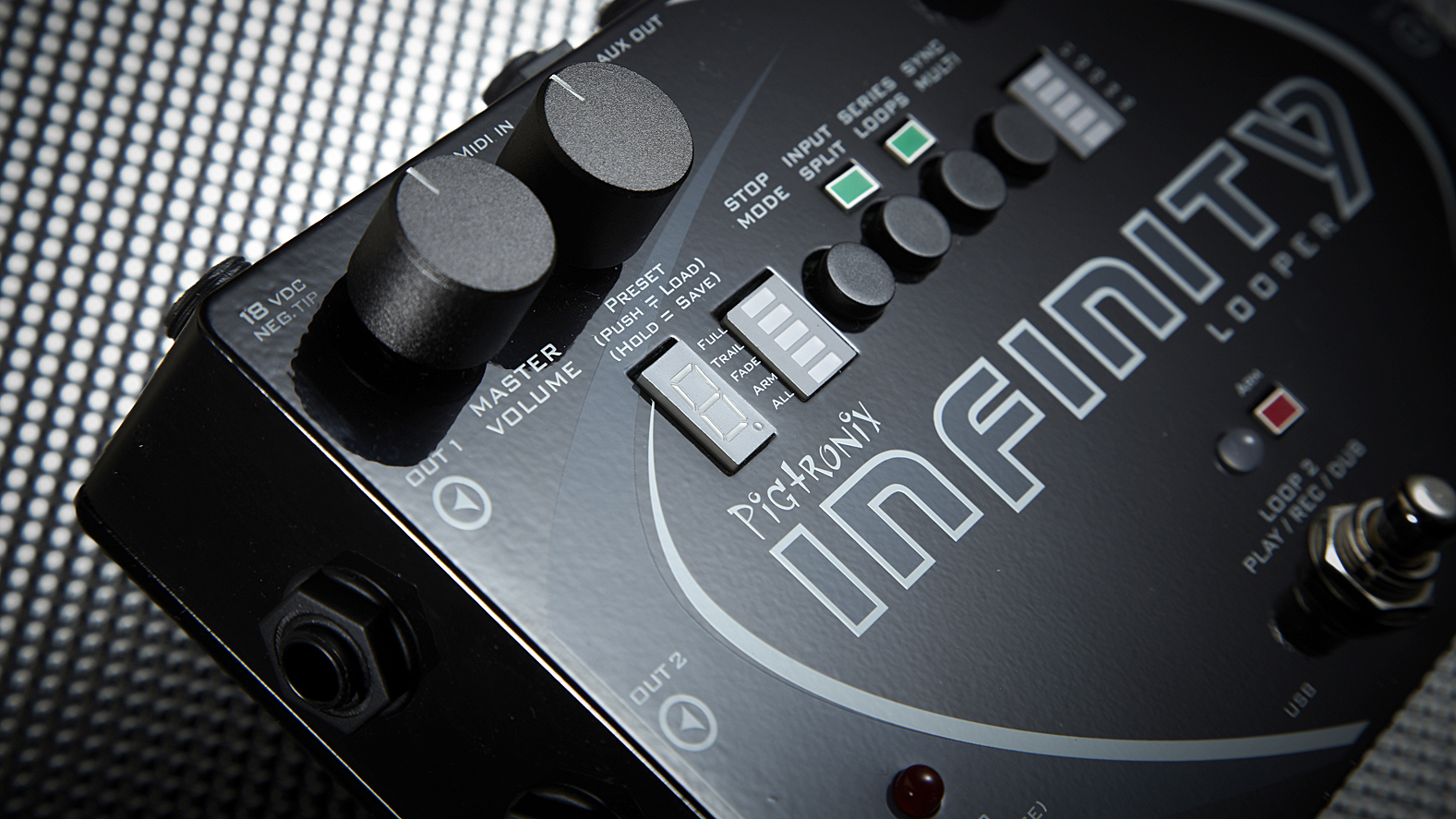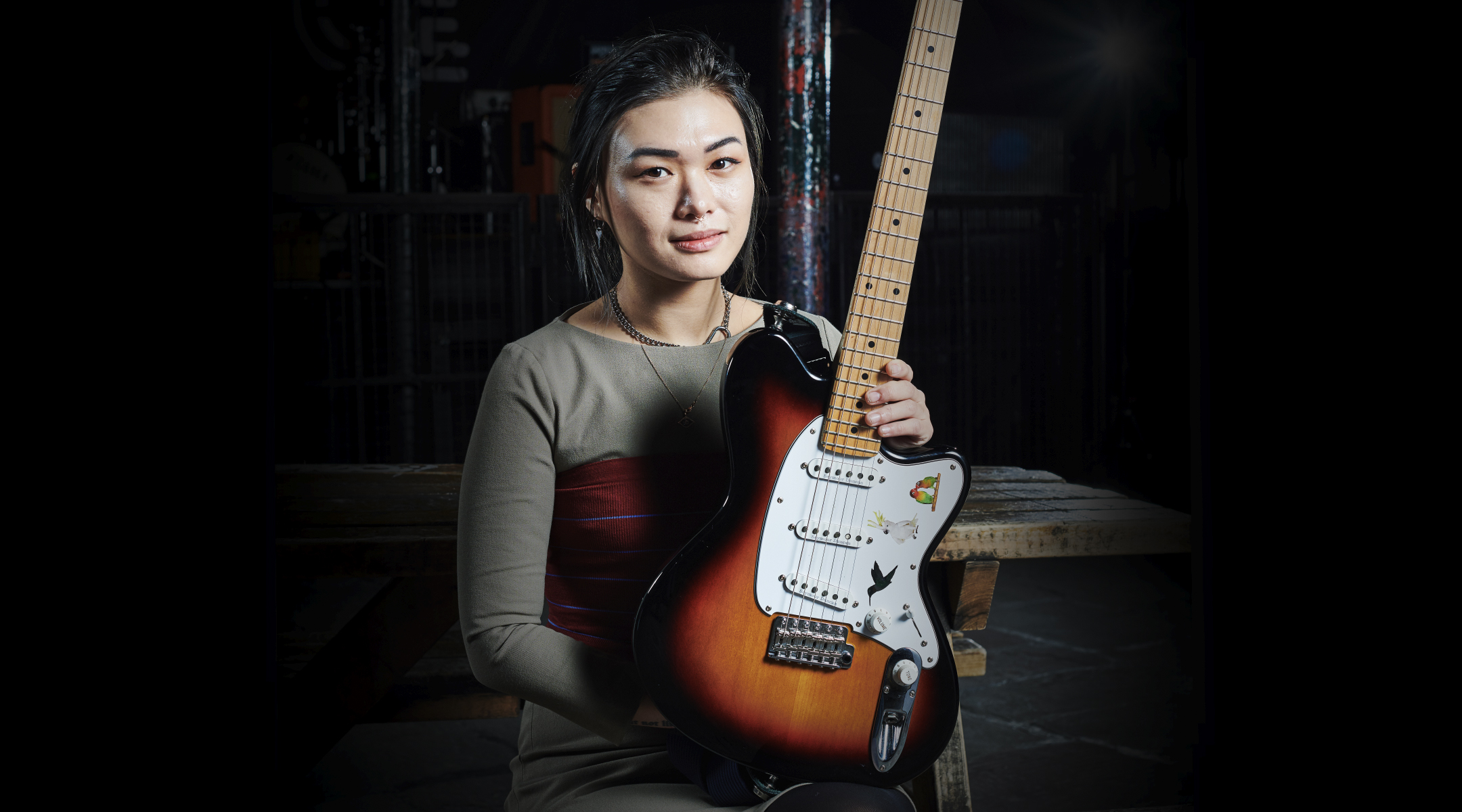Covet's Yvette Young: my 12 top tips for guitar players
The multi-instumentalist shares the key inspirations behind her unique approach to guitar

“I’m a firm believer that if you’re given a deadline and want to finish something really badly, you can force yourself to do anything,” says Californian guitarist (also violinist and pianist) Yvette Young, who plays in largely instrumental, progressive trio Covet.
She’s talking to MusicRadar about their new album, Technicolor, explaining how a short window in between life on the road and studio time gave birth to a large portion of its sparkly and ethereal sounds.
“We’d already booked our studio, so I had a little more than a month to write most of the album,” she continues. “I think three songs were written, the other seven came over that month. I made it my job, like a 9-5, and I just wrote and wrote. Something bad happened to me and I was going through a really low time so a lot of these songs, even they’re so happy and uplifting, were written in my lowest stately mentally.
“I remember when I wrote Parachute, where I’m singing and it’s all happy, I was actually crying while writing it. I guess it was determination – because when you’re sad you don’t really want to do anything, sometimes you just want to lie around and be sad! I decided not to let my emotions govern my actions. I became a bit of a robot and forced myself to write every day…”

"In a weird way, having the task of finishing an album occupied my brain and actually saved me"
Looking back now, she explains, there’s almost a sense of gratitude for the feelings and emotions that poured out of her mind and onto the fretboard. As well as seeding some of her most dazzling music to date – sounds which only reaffirms her stature as one of the brightest stars in a new generation of talent – it also brought some much-needed respite and catharsis from the drowning noise of real life.
“In a weird way, having the task of finishing an album occupied my brain and actually saved me,” offers Young. “I’m very loyal to guitar, because no matter what, I can sit down to write music and feel better. It really has the ability to transform my mood and take me out of whatever is going on.
"I was completely invested in the music, trying to write things that sounded like how I wish I felt. I was actually able to finish a couple of weeks early to give my bandmates time to write. I didn’t want to be like, ‘Songs are done, they’re all in 13, here you go and good luck because we are recording tomorrow!’”
Want all the hottest music and gear news, reviews, deals, features and more, direct to your inbox? Sign up here.
In this MusicRadar player guide, the young virtuoso offers 12 tips from her experience in developing her own unique style.
1. Experiment with tunings
"Shaking up the tuning forces you to use your ear, rather than what’s comfortable"
“I really love DADF#AE. I used that a lot on the new album. I just tuned my guitar like that one day and ended up feeling really inspired by it. I think it suits really uplifting stuff. But if I tune DAC#F#AE, all of sudden it makes everything moody and temperamental. It’s still kinda happy but also a bit gnarly and abstract. Lowering that one string changes a lot of intervals for me.
“What I love about alternate tunings is that when you get stuck doing the same shapes all the time, you start writing out of comfort as it’s what you’re used to. It’s hard to break out of the shapes you automatically go to. So shaking up the tuning forces you to use your ear, rather than what’s comfortable.
When it all starts sounding the same, I will change a few strings here and there and all of a sudden it will sound new. Your go-to interval might become really bad, so you have to find a new one.
“Another one I like FACGAE, which is probably my favourite acoustic tuning. I tend to write a lot of Lydian-sounding stuff in that one, for some reason! A lot of Midwest emo and math-rock has that flavour. I grew up loving folk players like Cat Stevens, Sufjan Stevens, Joanna Newsom… I was attracted to that American-esque folk sound and they use Lydian from time to time.”
2. Let notes ring out
“Whatever it took to get the melody out, I would do"
“I like to let notes ring out on purpose, filling out the sound while I’m doing a tapping lick like on the song Atreyu. Sometimes tapped ideas might have a lot of notes but might lack the width of a nice chord. Using open strings can help you fill out your sound. You have to be really strategic about it. I think about that when I’m writing. For me it was always about chasing the melody, rather than building my skills…
“Whatever it took to get the melody out, I would do – so I do things like tap slides in opposite directions. I used that opposing motion because it’s what I heard. I was like, ‘I don’t know if people are supposed to do this but I’m going to have to!’ It’s all muscle memory you train yourself into. I’ve practiced things like hammering on with every finger on my left hand and trying to make sure every note is even.”
3. Fingerpick higher up on the neck

"I view my left hand as bass notes and harmonise the lead melodies using my right"
“I fingerpick quite high up so I have less distance to move for any tapped runs. That’s a big tip that saves a lot of time. A lot of people are used to being closer to the bridge and it can feel hard to pick over the neck because it feels like there’s less space. It’s a bit like piano, I view my left hand as bass notes and harmonise the lead melodies using my right.
“I use my neck pickup a lot for that reason, so I get more presence… or neck and middle, actually. That’s probably my favourite because you get the sparkle from the higher strings but still sounding nice and chunky. And then I might fill in the melody with whatever notes I want to drone over it to sound full, which will quite often be fretted with my left hand and picked with my thumb on the right hand.”
4. Sing out melodies to yourself
“A lot of music I write by singing. I don’t have theory in mind, I think of ideas in my head and hum them out, finding out where the notes are and then coming up with ways to decorate them afterwards. It will start with a simple five-note backbone and then I’ll add in the pull-offs, tapping and all these other little things. I probably learned each technique separately though, starting with just chords.
“I remember the first day I picked up the guitar being the most gruelling thing ever… it just hurt. I thought the guitar was pain and I couldn’t get it to sound good, but I persisted every day. So all of these techniques, like tapping, felt really uncomfortable and I couldn’t get a good tone out of the strings. Over the years, it starts to become automatic. I don’t have a pick so I can use all my fingers. I might use one for recording but live, no way!”
5. Collaborate with other guitarists
“It’s a great way of shaking things up – if you feel like you’re too stuck in your own ways, go and play with someone who has a completely different style. See how comfortable you feel! I just did something with Ichika who is so good. We’re doing another one and I’m so excited because that first one came from him sending me his idea, me writing over it and then him voicing it around me.
“So we’re going to do it again but with me starting it. I wonder if it will be different… different chemistry can produce such different colours. I learned from the experience and started writing things I normally wouldn’t write, really jazzy stuff with changes I wouldn’t necessarily go for. It’s just what I heard, I started singing the idea and it just happened.”
6. Understand how music flows

“I love Guthrie Govan. He’s not known for being a crazy tap guy, I’d say he’s more known for writing long melodic passages that just flow. I really admire his versatility. He was the first guitar player that made me really listen to the music because it felt so emotive. I was listened to his Erotic Cakes album a lot – that record is awesome, a whole spectrum of sounds.
“I learned his song Waves when I first picked up guitar. It was challenging, too challenging for me! But I loved that flow. It’s exactly what I love about classical music like Ravel or Chopin… that stuff flows.
"Then I started listening to a UK band called TTNG, and their guitarist [Tim Collis] does what I do, essentially – using a lot of pull-off and tappy stuff over long passages. He inspired me a lot.”
7. Know how to control your instrument

"I kinda like the sound of hum, it adds character"
“When I’m playing it’s quite automatic and in my subconscious. I know I have to use parts of my hand to mute. I actually use my right palm to control a lot of the ringing out. Also I might clamp strings down if I don’t want them to ring out, while using other fingers or hands to fret things.
"Also, if it rings out live, it’s rock music… so what. I grew up listening to punk music and that shit is not perfect at all – there are all kinds of gnarly notes and bad timing – but that’s what makes it cool.
“Some people get so turned off by single-coil hum. They want the guitar to sound very quiet and sterile and perfect. I kinda like the sound of hum, it adds character. Maybe that’s my folk roots bleeding in.
"I hear a lot of those complaints in the progressive metal crowd because a lot of them use amp sims and digital-sounding stuff that doesn’t have that extra noise. Trust me, I’ve had wrong notes ring out. It happens, there’s not much you can do about it. Everyone messes up… it’s okay!”
8. Use a loop-station to perfect your lines


“I don’t use a looper that often to find melodies. Usually I can just hear stuff in my head – thank you, ear training from my classical days! But there are a few songs on this album that came from loops. The opening track, Good Morning, started as a harmonic thing while jamming over myself.”
9. Look at the guitar like a piano

"I tap not because I’m trying to tap – it’s because I need to hit this note up here and all my other fingers are busy"
“This definitely works in terms of integrating the right hand and left hand. I love harmony and counterpoint. I guess some of the phrasing comes from jazz and metal, plus classical music and soundtrack stuff. I take all the things I love about different genres and blend them into what I write, finding a new context to try and make them new.
"I tap not because I’m trying to tap – it’s because I need to hit this note up here and all my other fingers are busy. I don’t want to let traditional guitar shapes dictate what I write. So it might end up being pick, pick, pick, tap, tap, tap and then slide to get the interval jumps I want.

“I guess some of my tapped runs sound a bit like sweep picking. It’s just a mixture of pulling off and then tapping again and again moving along the fretboard. It takes a lot of muscle memory because you need to know the exact distance to move and do it really quickly.
"It’s like practicing sweep picking, you slow it down and build it up. I have a lot of new music that has a tapped run that sounds really impressive like a sweep but it’s just tapping!”
10. Make no genre out of bounds
"You’re allowed to borrow across the board and amalgamate it into your own distinct voice"
“It’s responsible as a musician to study everything. You don’t know what concepts you can take from one genre to decontextualize them in a different style to make something new. You’re allowed to borrow across the board and amalgamate it into your own distinct voice…
“That said, I don’t think I’ve ever sat at home and jammed over a 145 blues. Maybe I’m missing out that whole dad demographic (laughs)! All those dads who could be thinking I’m cool… I need to know more about blues, I clearly don’t know shit. No genre should be off-limits.”
11. Use tension to spice up your melodies

"To sound like me I guess you have to play some really optimistic or pretty and then play a jarring minor second at the end"
“My favourite thing to do – and god, it should be made illegal for me – is use a minor second interval, especially when I’ve dialled in a tone that breaks up when I dig in. You hear this really sick overtone hanging over anything. I also like bending a little out. It’s so nice to throw in that minor second for extra dissonance.
“I sprinkle them everywhere and really need to stop! To sound like me I guess you have to play some really optimistic or pretty and then play a jarring minor second at the end. I love doing that! I like chromatics a lot but nothing too out there, it can start sounding a bit crazy, like you’re in some sort of funhouse!”
12. Only buy instruments that inspire
“You can care about how a guitar looks and feels, and I would say feel is very important, but if you don’t like how it sounds you aren’t going to pick it up – and when you do it will make you grumpy. I hate that feeling! I want everyone who picks up my signature [Ibanez YY10] and feel the some magic I felt when I first picked one up, with those beautiful-sounding Seymour Duncan Five-Two pickups going straight into something like my AC10. When you’re stoked with the sound, you will write more music. It makes you want to play.
“I went for a U-shaped neck because a lot of people with bigger hands are deterred by thin necks, so this one is a compromise. It feels great, it doesn’t have a gloss finish – they slow me down when I get sweaty. I prefer that matt, almost satin-like feel, while your oil gels onto the back… which sounds gross! It also comes pre-tuned to FACGBE, which is going to piss people off but also hopefully make them do something new!”
Covet's new album Technicolor is released via Triple Crown Records on 5 June.
Check out Covet's Bandcamp site at covetband.bandcamp.com
Amit has been writing for titles like Total Guitar, MusicRadar and Guitar World for over a decade and counts Richie Kotzen, Guthrie Govan and Jeff Beck among his primary influences. He's interviewed everyone from Ozzy Osbourne and Lemmy to Slash and Jimmy Page, and once even traded solos with a member of Slayer on a track released internationally. As a session guitarist, he's played alongside members of Judas Priest and Uriah Heep in London ensemble Metalworks, as well as handling lead guitars for legends like Glen Matlock (Sex Pistols, The Faces) and Stu Hamm (Steve Vai, Joe Satriani, G3).

